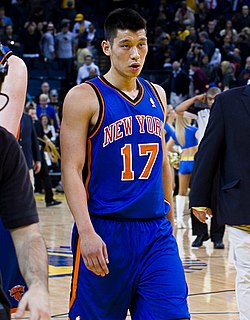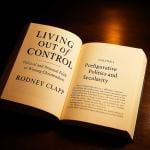
My Facebook newsfeed is suffering from Linsomnia. Discovering a new celebrity like Jeremy Lin for someone in my line of research interests is enough to throw every other project off the desk and spend long nights keeping track of what is happening to America’s favorite new point guard, and what people are saying. Like a lot of writers who have commented on Lin, I too have not been an avid NBA watcher much less the Knicks (although mentioning them has helped break the ice a couple of times: “So uh, how ‘bout those Knicks?” Try it sometime.)
So what are people saying about him? While normally I prefer to make the best of data that has already been collected through a survey, every once in a while I’ll try my hand at collecting and creating data. Believe it or not there is an actual science to this but for the purposes of this blog I confess I didn’t apply the same kind of rigor that would make my findings publishable. One way to create data on Jeremy Lin is to do what’s called content analysis. I have been bookmarking every possible news article, blog and other written work about him that has been shared with me and have systematically coded for themes and key phrases that repeatedly show up on an excel file. Admittedly, there may be bias in the articles that are shared with me.
You know how some ideas seem really good at the time? In the early morning hours as I write this I managed to wade through 45+ articles on Lin and have found that content analysis cannot be done well in a very short amount of time. Indeed as the Linsanity continues I am finding more and more writers commenting on it every few hours. That said, there are some interesting patterns that emerged in the counts so far. Since Jeremy’s story is largely about his rise as a basketball phenomenon I skipped this most obvious category. Instead I focused on those items that are more interesting to a sociologist like me–race, religion, and education. The most often used term in all of Lin’s stories I have reviewed so far is that of his racial background (27 times). The least often used term that I tracked was his religious group participation in college, the Harvard Radcliffe Asian American Christian Fellowship. This is the kind of group that I blogged about in a previous post. In descending order these are the terms that I tracked with their frequencies.
Asian American (27)
Chinese/Taiwanese ethnicity (24 total 15/9)
Christian identity (18)
Harvard (17)
Stereotyping (15)
Racism (13)
Piety (how religious he is as opposed to what faith he identifies with) (10)
Child of immigrants or second-generation (6)
Role model (4)
Asian American Christian Fellowship (3)
And then there’s a handful of blogs that touch on the economics of Lin, how he’s now valued in multiple millions of dollars, he’s increased sales at Madison Square Garden, increased the stock value of that company. And another handful of theology students, ministers, and others that can loosely be described as existentializing Lin’s public statements about his faith and his ambition to be a minister after his stint in the NBA. These read like: “Is God really in control over Jeremy Lin’s life?” “What God does Lin attribute to his success since he seems so vague about who God is?”
When we step back from all of this, it’s clear from the terms I tracked that identity takes the lead, and between race and religion, race is more important by far. It’s not only that he is one of 4 Asian American basketball players ever to make it to the NBA, and the first Chinese/Taiwanese US-born Asian American. In this sense he stands out as a minority in a sport that is dominated by white and black athletes. According to NCAA reports he was 1 of 18 Asian American men’s players in Division I basketball, that is, 0.5% out of all players in this field. Since we identify people based on race, it’s not surprising that Lin stood out on the court while playing for the Crimson, and he stands out now for that same reason.
Far fewer writers have much to say about his religious identity. But he’s stated his Christian faith enough times that some have paid attention. Nevertheless Lin’s faith speaks volumes to the 45% of Asian Americans that profess to be Christian, and perhaps to the 78% of all Americans who are Christian.
If we take mentions of “racism” and “stereotyping” together, we have a second large category, and I distinguish it from mentions of “Asian American” and his Taiwanese background for the following reason. Some have argued that the attention paid to Lin’s racial identity is precisely evidence of continuing inequality and others have argued that this is progress in breaking barriers through the industry of sport. It seems like it’s both. On the one hand, it’s clear that his minority status in basketball kept him from being evaluated the way white and black players of similar skill are evaluated. On the other hand, his current presence suggests that he has somehow gained access after years of anti-Asian prejudice. The question that remains is whether this will be an exceptional moment that reinforces the view that Asian Americans can’t play ball as well as others, or if it serves as a call for recruiters to pay attention to talent rather than race.
The fact that Lin came from Harvard is a distant theme but it could be a component of racism or identity. These mentions are linked either to the stereotype that Asian Americans are extraordinarily bright or to the implied racism that he was overlooked when big college basketball recruitment reviewed his case. Little is noted regarding how his faith was in any way informed by his participation in Asian American Christian Fellowship, one of the larger evangelical student groups on campus.
On the personal end, one of the other things that Jeremy Lin’s story has done for me is bring into greater significance of basketball as a shared experience for many second-generation Asian American men and women. I had never made connections between my cousins’ interest in basketball (which seemed un-Asian and so mainstream American) and this historical ethnography of basketball culture in San Francisco, (about 40 miles where Jeremy grew up) I read about a couple of years ago until Lin lit up the web and Madison Square Garden. As it so happens, across the west coast, Chinese and Japanese American communities formed basketball leagues as a way of integrating into mainstream American society while also recognizing the need for ethnic minority solidarity, especially for those raised in the US. They knew they weren’t accepted by other Americans but they wanted to enjoy the kinds of leisure activities that were so much a part of the mainstream experience.

Through Jeremy Lin’s startling rise in basketball, a minority group that is largely invisible in major sports is now on the forefront while at the same time his Ivy League educational pedigree reinforces the model minority stereotype that Asian Americans are super smart but not very athletically talented (at least in basketball). His background as the child of immigrants gives many a renewed hope in the American dream.
Will Lin be the beginning of new cohorts of Asian American basketball professionals? Will he become the exception to the stereotypes that emasculate Asian American men? Will his experience as an Asian American Christian draw him out in ways that will differ from white and black Christians in professional sports and ministry? The world waits in Linticipation.











